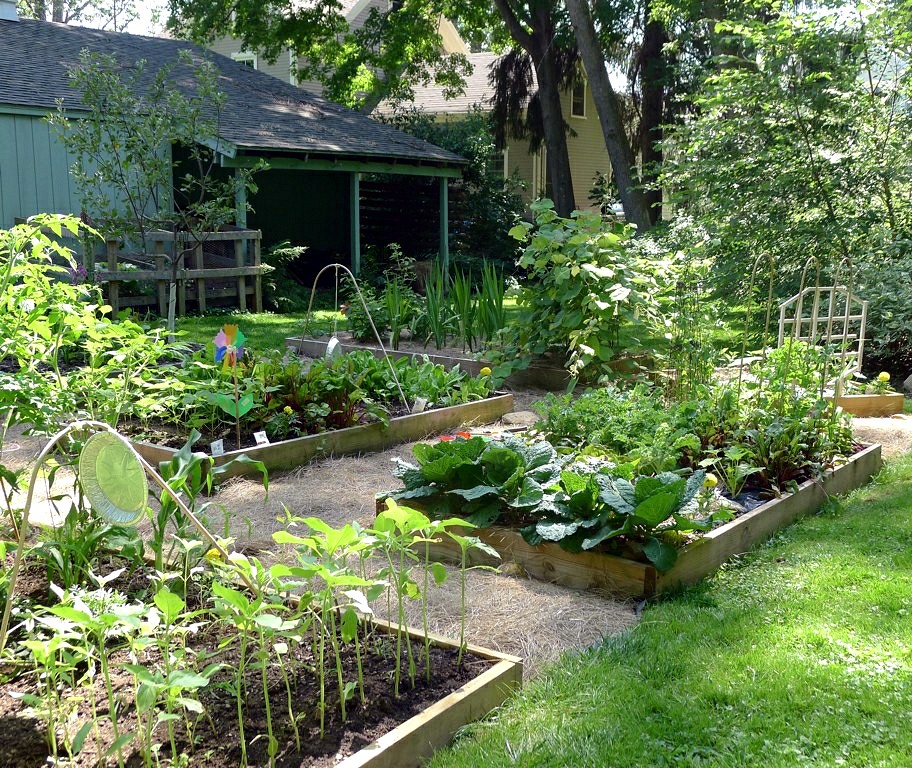
Supporters of a community garden in Sitka hope to address local food insecurity from the ground up, literally, by building gardens and renting out plots to green thumbs who want to grow their own food.
The organizers behind the proposed Sitka Community Garden Project presented their pitch to the Planning Commission on July 19.
Charles Bingham is the president of the Sitka Local Foods Network, which is partnering with Transition Sitka, a nonprofit focused on sustainability, to steer the project.
“We have a lot of people who live on boats, we have a lot of people who live in apartment buildings. And so they don’t have land in their backyard where they can grow food,” Bingham told the commission. “And if you’re able to grow your own food, even if it’s not fulfilling 100% of your needs, it’s making it easier for you to make ends meet, and we need to have something like that in town.”
The group hopes to lease two city-owned lots– one on Jarvis Street, the other on Osprey. The Jarvis Street lot is in an industrial area, but the Osprey Street location is in a residential area. And that prompted some concern from neighbors. Several worried about the muskeg being developed and the trees, which some say works as a buffer between Halibut Point Road and their homes. Jay Kendall said the whole town would notice once the trees were gone.
“What’s it gonna look like for nine months of the year, a bunch of raised garden beds look like a Louisiana graveyard?” he asked.
“And then in the summertime, I pulled up the Juneau tiny garden website, and they had all hoops and greenhouse tops. You know, so it’s gonna be a plastic garden, all covered in plastic, everybody’s gonna see it all summer long.”
Commissioner and acting chair Darrell Windsor said he supported municipal gardens but thought the Jarvis Street location in the industrial area was more suitable. And he worried about the feasibility of the project, since both plots are on wetlands.
“There’s there’s no doubt of the need for community gardens,” Windsor said. “Most places you can’t grow a garden, even in a 10 by 20 foot area, so there is a need for it. It’s just the location and the cost of the location, which is what runs through my mind. And both these spots, when you consider the drainage and the fencing and everything else, it’s going to be really expensive.”
Leah Mason, with Transition Sitka, said it was preferable to build gardens in residential over industrial areas, so that neighbors could benefit.
“We’ve suggested areas where there are people because, ideally, a community garden is within walking distance, which eliminates the need for parking,” Mason said. “And which generally would indicate that the people who are around it…will be involved in it. That’s that’s what we’re depending upon.”
And commissioner Wendy Alderson said she thought both plots had potential if they were done correctly.
“I’d like to see where this will go because food security is a big deal. And the grocery stores are empty a lot,” Alderson said, and added that even if the item you want is available, it can be expensive.
“I went to buy mint today, one little one of those little tiny packages of mint to put in a salad. They wanted $7.50 for it. And I put it back,” she said. “I don’t need a garden plot to grow mint, I can grow it in my window, and I should be doing it. But food’s expensive, and there’s not enough of it here. And I think that this could go a long way to helping.”
The commission didn’t vote on whether to lease the property to the community garden group. That will be up to the Sitka Assembly. And while the group is seeking a long-term lease, Planning Director Amy Ainslie recommended a three- to four-year lease, which would give the group time to secure grants and meet certain requirements for the project, like permitting from the Army Corps of Engineers. Before they could break ground, they’d have to meet those benchmarks. Then they could come back to the city to renew their lease.






























